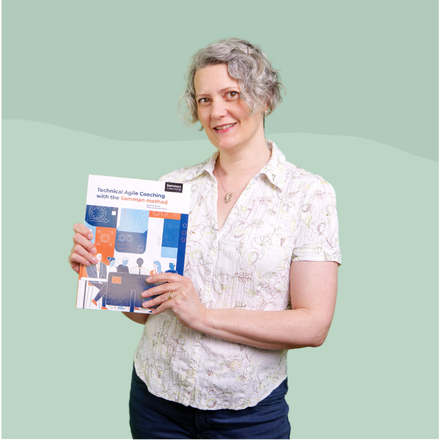The "Programming with the Stars" final was almost the last event of the whole agile2008 conference, and Michael Feathers and I were up against Lasse Koskela pairing with Noah Jacobson. Our brief from Joshua and Jeff was "you have 8 minutes on stage. Impress us". This...
We pulled it off!
Today in "Programming with the Stars" our task was to do "Story Test Driven Development" (aka Acceptance Test Driven Development). With just 6 minutes on stage, this was a pretty tall order. Jeff and Joshua had suggested that we use tools like FIT or Fitnesse to...
We scraped by with the help of the audience
We were up last this time, rather than first, and I was so impressed with the three pairs who went before us, they all paired really well and seemed to achieve what they set out to do. Joshua (one of the hosts) also decided to interview each pair just before they...
Onwards with the stars
Michael Feathers and I competed in the "Programming with the Stars" competition today, which was fun, if rather nerve racking. Our category was "TDD from scratch" and we chose to perform the FizzBuzz Kata in python. We chose that because we thought it was simple...
Geek meets Idol
I've just got to Toronto in advance of the agile2008 conference which starts on Monday, and I'm looking forward to it with great excitement and some trepidation. Until now it was the session that Geoff and I are running on Thursday that was claiming all my attention...
GothPy
Last night a group of eight python hackers were drawn into a darkened conference room on Odinsgatan "Odin's street" in order to exchange little-known information and to take part in obscure coding rituals. To open proceedings, Andrew Dalke shared deep insights into...
Bob Payne and language communities
I've listened to a lot of Bob Payne's agile toolkit podcasts and I think Bob is pretty poor at interviewing people, although he does interview some very interesting people.Bob clearly doesn't plan his interviews or think in advance about what questions to ask. He just...
Manipulation and learning
There's been a thread on the Agile Sweden mailing list this week about the kind of manipulation that consultant-coaches use in the course of their work with a software development team. Several people seem to favour this definition of what manipulation is:"One view,...

Hi – I´m Emily!
I am an independent consultant with Bache Consulting and chair of the Samman Technical Coaching Society. As a technical coach I work with software development organizations who want to get better at the technical practices needed to be agile, including Test-Driven Development, Refactoring and Incremental Design. I live in Gothenburg, Sweden, although I am originally from the UK. I’ve written two books: “Technical Agile Coaching with the Samman method” and “The Coding Dojo Handbook”. I teach for both O’Reilly and Pluralsight. I’m married to Geoff Bache, creator of TextTest. I am also on Mastodon as emilybache@sw-development-is.social.

If you’d like to know a bit more about me, my work, and the talks and workshops I offer, please visit my main website: EmilyBache.com. There, you’ll find information about my background, upcoming events, and the services I provide as a technical coach and consultant. It’s a good place to start if you’re curious about how I can support your team in improving coding skills and agile practices.

Practical Coaching –
Beyond the Blog
If you’re enjoying the insights shared here on the blog, you might enjoy my training too.
“Technical Agile Coaching with the Samman Method” offers a practical guide to improving how developers collaborate and write code. You’ll learn hands-on techniques for Test-Driven Development, Refactoring, and effective team coaching.
To learn more about the book, just click the link below.
Blog categories



